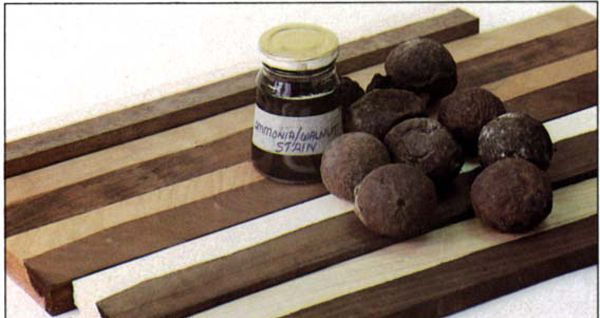
Synopsis: In lists of the various properties of cabinetwoods, American black walnut stands near the middle in every category. There are dozens, if not hundreds, of woods that are stronger, denser, and susbstantially easier to work. Yet walnut is so flexibly appropriate for a broad range of uses that, overall, it rivals any other wood in the world. It might, in fact, be the very best cabinetwood of all.
In lists of the various properties of cabinetwoods, American black walnut, Juglans nigra, stands near the middle in every category. There are dozens, if not hundreds, of woods that are stronger and denser. There are a few woods with better figure and richer color. Some hardwoods are substantially easier to work than walnut. And many fine cabinetwoods are a good deal less expensive.
Yet walnut is so flexibly appropriate for a broad range of uses that, overall, it rivals any other wood in the world. It might, in fact, be the very best cabinetwood of all. What does walnut bring to the party that causes it to stand out? To answer this question, we must consider not only its physical properties, but a number of subtle things that appeal to other senses and to our emotions.
Take gunstocks, for example. Of the four woods commonly used, only walnut is rated “excellent” in the physical attributes a gunstock requires. It has been the favored gunstock wood since colonial times, long before laboratory testing could comfirm our pioneers’ instincts. The substitutes, hard maple, yellow birch, and sycamore may surpass walnut in one or two respects, yet, in the final balance, walnut becomes the standard, the perfect gunstock wood. In weight it is heavy enough to absorb some recoil, yet not so heavy as to be arm-wearying. For its weight, it is outstanding in strength, hardness and shock resistance. It is stable enough not to endanger the precise alignment between metal and wood. It machines beautifully. Walnut’s dark color, aesthetics aside, is a particular asset-the runners-up all require staining lest they be conspicuous in the field, and are, therefore, more difficult to touch up if dented or scratched.
Notice how many of these attributes are also desirable for furniture. In the gamut of cabinetwoods, there are only a handful of woods as well endowed. In addition, walnut is neither ring-porous like oak or diffuse-porous like maple. It is what most experts call “semi-ring-porous,” with a gradual transition between earlywood and latewood. This helps to make for little, if any, chatter in its resistance to the cutting edge, allowing shavings to peel off with a wax-like roll. Walnut has adequate ring-porosity to show a beautiful grain pattern, but is diffuse-porous enough to make the use of fillers optional in most furniture applications-if unfilled the pores will show but not be objectionable.
For the full article, download the PDF below:
From Fine Woodworking #58
Fine Woodworking Recommended Products

AnchorSeal Log and Lumber End-Grain Sealer

Ridgid R4331 Planer

DeWalt 735X Planer























Log in or create an account to post a comment.
Sign up Log in